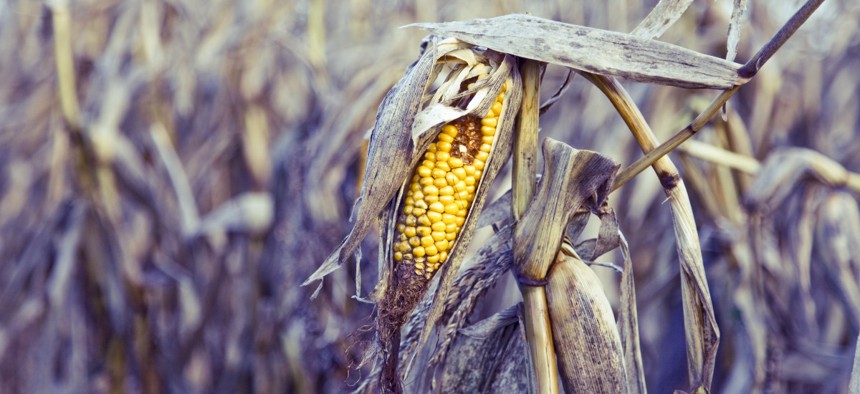DARPA Wants a Plan to Stave Off Unknown Food Crises

mr_morton/Getty Images
Under the new Foundational Security for Food Systems project, researchers will look at identifying large-scale crop diseases before a catastrophic crop failure—even for pathogens of unknown origins.
The Defense Advanced Research Projects Agency, or DARPA, is developing ways to protect the domestic food supply from any potential threat, including never-before-seen diseases for which the U.S. has no defenses and no means of detection.
Ensuring U.S. and global food security is a critical task, and one made harder by ever-evolving—and in some cases manufactured—diseases attacking food crops. The new Foundational Security for Food Systems, or FS2, program being run by the edge research teams in DARPA’s Defense Sciences Office—often called “DARPA’s DARPA”—looks to start the conversation on identifying potentially catastrophic crop diseases, regardless of origin, and the ways in which those diseases tend to progress in cereal crops.
“Current approaches to the monitoring for new issues and problems in U.S. crops generally depend on approaches that involved a list of pathogens, necessarily limited to naturally occurring taxa,” or families of disease, Molly Jahn, the DSO program manager running the FS2 project, said Jan. 17 during an information session.
“Mitigation typically focuses on preventing a disease agent on that list from causing damage to plants,” she said. “For many years we have struggled with comprehensive approaches to monitoring real-time for damage due to unknown unknowns.”
New technologies have allowed researchers to shift tactics to “anomaly detection,” Jahn said, but still suffer from high costs for monitoring, high noise-to-signal ratios for detection and problems definitively linking those anomalies to specific causes fast enough to react within a relevant window.
“So, the FS2 program is focused on testing a pathway-based approach to develop advanced threat detection and warning capabilities for U.S. cereal crops,” i.e., high-yield grains like rice, wheat and corn, Jahn said.
By focusing on the ways in which crops fail, DSO is hoping to develop a means of detecting and halting significant diseases no matter the actual cause.
This first cohort will look at one of the more simple grains—rice—and a well-known cereal pathogen—corn rust, a fungal disease prevalent in the U.S. for which there is a wealth of data. While rice grains are immune to fungal rust diseases, DSO program leads hope to use it as “a well-characterized test challenge to crop health that relies on defined host pathways for symptom development or resistant responses,” according to the solicitation.
For the first, participants will develop models for how fungal rust and other diseases move through rice and corn, examining the progression and symptoms of the disease in a single organism and the larger biome. Once those pathways are identified, Phase II will focus on how to identify those pathways during an active event, no matter the pathogen, and “develop a new pathway-focused paradigm for detecting and interpreting field-level signals of a genetic event of concern,” the document states.
Jahn noted similar work on pathogens attacking non-plant beings such as humans and animals, in which “variation on the pathogen side—whether natural, human generated or some combination thereof—exceeds our ability to reliably anticipate every possible variant and diagnose the pathogen in time to guide treatment.”
The FS2 program will attempt to answer three key questions:
- Are there relatively few symptom development pathways that could serve as a foundation for the earliest detection of a process with the potential to be of great concern?
- If so, can activation of these pathways be the foundation of more agent-agnostic detection paradigms?
- Can intervention in the progression of such pathways serve as the foundation for the mitigation of damage?
Jahn also stressed that the program “does not [involve] genetic modification of any organism or any wet lab work,” in which researchers would be working with live organisms. The first two phases of FS2 will focus solely on modeling using data sets.
Like many of its programs, DARPA is using its other transaction authority to fund the project. Agencies granted OT authorities by Congress can use the low-regulation contracting method for riskier, unproven projects with smaller dollar amounts and incremental funding.
The FS2 project will be implemented over two phases, each capped at $500,000, for a total of $1 million. Phase I will run for up to 10 months and Phase II will run for a maximum of eight months.
DSO is accepting proposals through Feb. 10, with a tentative program start date of April 11.






